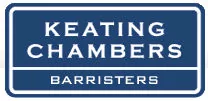On 5 February 2013, the IChemE launched a complete suite of the new editions of the UK Forms of Contract for Process Plants. Paul Buckingham reviews the key changes in these widely used process industry forms.
Construction projects are about using materials and resources cost effectively to have something built. Identifying the right form of contract, and thereby allocating the risks and responsibilities in an appropriate manner, is a crucial part of that process.
Engineering projects involve parties accepting substantial liabilities and risks and, in the main, these liabilities and risks flow from the terms of the underlying contract agreed between the parties.
Traditional building and civil works contracts tend to focus on appearance and functionality, with less attention paid to the underlying design.
For engineering projects, the design and performance of equipment and plant is paramount, whilst the physical appearance is of little (if any) importance.
It is for these reasons that contracts for engineering projects are quite different from those utilised for traditional construction projects.
Process plants are judged by their operational performance. The IChemE's forms of contract are specifically written for the process sector and are therefore performance-based. This is the underlying philosophy of the forms and one of the fundamental differences from many of the other standard forms of contract used in the wider construction industry.
The IChemE's four core forms comprise a lump sum contract, a reimbursable contract, a target cost contract, and a 'back-to-back' subcontract.
The new editions are the domestic version of the IChemE's forms. They retain the philosophy and structure of the previous UK editions (published between 2001 and 2004) and the international forms (published in 2007), but are updated to take account of current industry best practice, changes in legislation, and to give greater clarity and consistency across the entire suite of contracts.
The main changes include:
- Revised insurance provisions, particularly in respect of future payments to the contractor for carrying out remedial work necessitated by the events leading to the claim.
- Amended provisions for performance testing, providing greater clarity for the management of the tests that establish the key matter of whether or not the performance guarantees have been met.
- The introduction of a formal notice procedure for important communications at a senior level.
- Fully balanced mutual indemnity provisions with respect to patents and other intellectual property rights.
- Enhancements to the extension of time provisions.
- Liability for pollution clean-up costs is clearly stated, leaving the question of the identity of the party to undertake the clean-up to be addressed at the time of the incident.
- Payment and adjudication procedures updates in accordance with the amendments to the Housing Grants, Construction and Regeneration Act 1996 set out in the Local Democracy, Economic Development and Construction Act 2009.
- Provision for payment in more than one currency.
- A requirement that the purchaser makes payment following issue of the project manager's payment certificate, without the contractor having to issue an invoice.
- Improved termination procedures, addressing the requirement to issue takeover and final certificates where termination is for the purchaser's convenience.
- Amendments to the limitations of liability to provide greater certainty on their scope and application.
The inclusion of extensive guide notes has long been an established feature of the forms. These have been updated and, for the first time, include flow charts which set out the underlying logic and procedures for performance testing under clause 35 (except the Brown Book (civil works), for which performance tests are inapplicable).
In conclusion, any party considering contracts for a process plant or any performance-based project can look to these new forms as representing current best practice in contracting for plant design, construction and testing.
The articles and papers published by Keating Chambers are for the purpose of raising general awareness of issues and stimulating discussion. The contents must not be relied upon or applied in any given situation. There is no substitute for taking appropriate professional advice.
This material is prepared for Chambers by our Director of Research and Professional Development, Professor Anthony Lavers (LL.B. M.Phil Ph.D. D.Litt MCI.Arb FRICS Barrister) Visiting Professor of Law, Oxford Brookes University.

